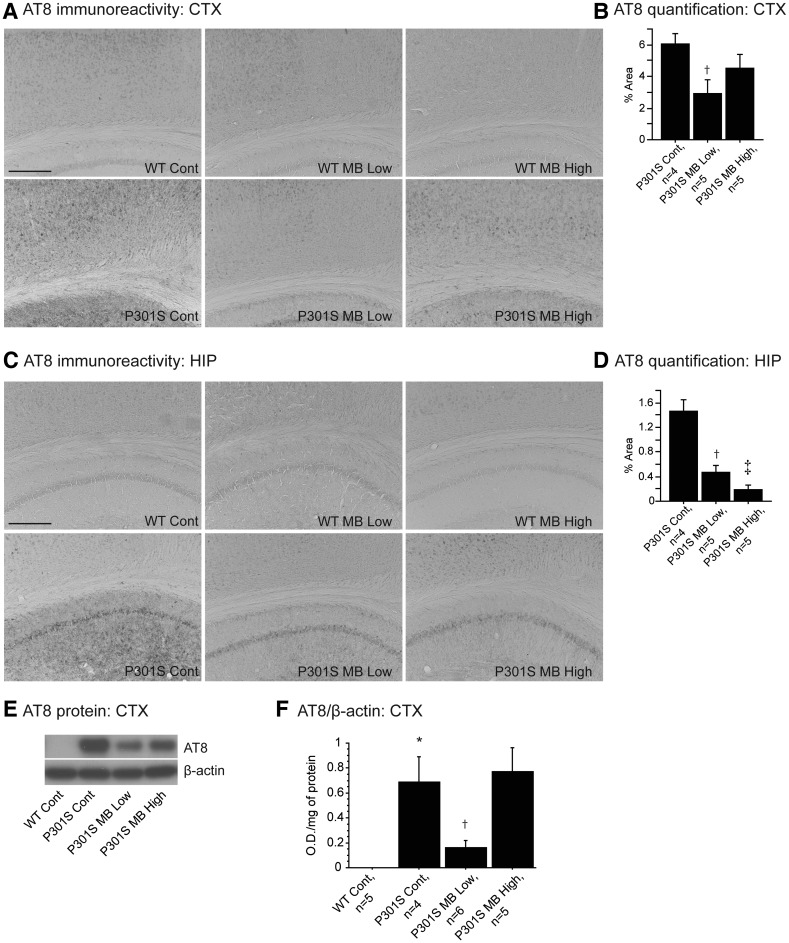Figure 2.
MB decreased tau pathology in P301S mice. (A) AT8 immunoreactivity in the cortex and (C) hippocampus of WT mice fed a control diet (Wt Cont), WT mice fed the MB low dose diet (Wt MB Low), WT mice fed the MB high dose diet (Wt MB High), P301S mice fed a control diet (P301S Cont), P301S mice fed the MB low dose diet (P301S MB Low) and P301S mice fed the MB high dose diet (P301S MB High). (B) Quantification of AT8 staining in cortex and (C) hippocampus of P301S Cont (n = 4), P301S MB Low (n = 5) and P301S MB High (n = 5). MB significantly decreased tau pathology in the cortex and hippocampus of P301S mice fed the MB low dose diet when compared with P301S mice fed a control diet (Fisher's PLSD, †P < 0.05) and in hippocampus of P301S mice fed the MB high dose diet compared with P301S mice fed a control diet (Fisher's PLSD, ‡P < 0.05). (E) Western blot of AT8 and (F) quantification of hyperphosphorylated tau by optical densities normalized to β-actin. P301S mice fed a control diet showed significantly increased levels of hyperphosphorylated tau compared with WT mice fed a control diet. Mice fed MB low dose diet showed significantly decreased phosphorylation of tau when compared with P301S mice fed a control diet (Fisher's PLSD, †P < 0.05).

